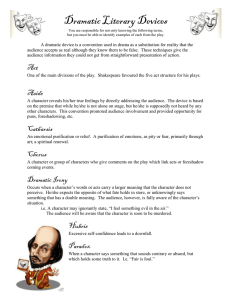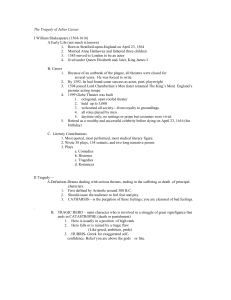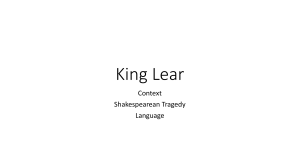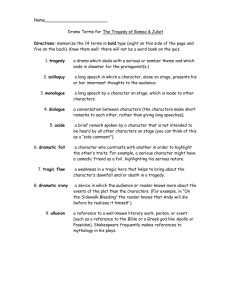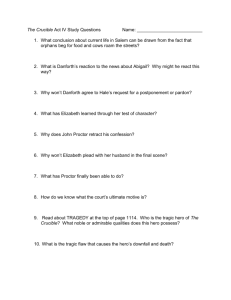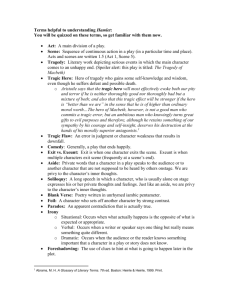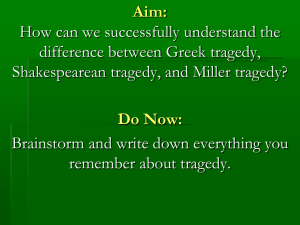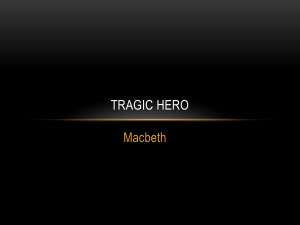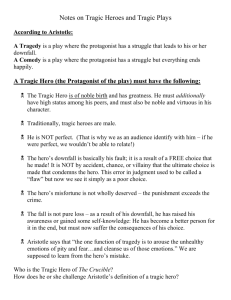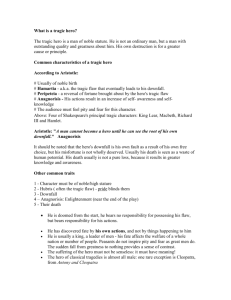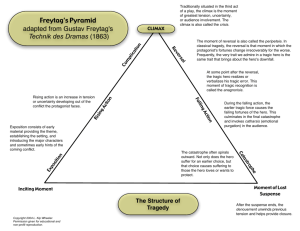Dramatic Literary Devices: Shakespeare Study Guide
advertisement
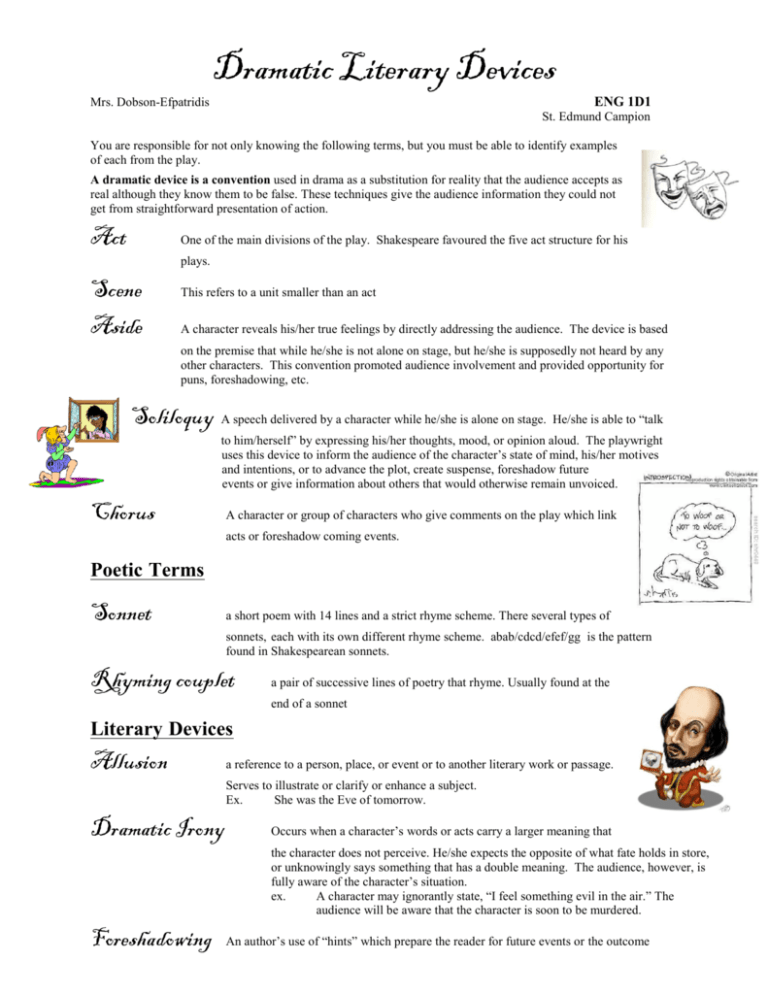
Dramatic Literary Devices ENG 1D1 Mrs. Dobson-Efpatridis St. Edmund Campion You are responsible for not only knowing the following terms, but you must be able to identify examples of each from the play. A dramatic device is a convention used in drama as a substitution for reality that the audience accepts as real although they know them to be false. These techniques give the audience information they could not get from straightforward presentation of action. Act One of the main divisions of the play. Shakespeare favoured the five act structure for his plays. Scene Aside This refers to a unit smaller than an act A character reveals his/her true feelings by directly addressing the audience. The device is based on the premise that while he/she is not alone on stage, but he/she is supposedly not heard by any other characters. This convention promoted audience involvement and provided opportunity for puns, foreshadowing, etc. Soliloquy A speech delivered by a character while he/she is alone on stage. He/she is able to “talk to him/herself” by expressing his/her thoughts, mood, or opinion aloud. The playwright uses this device to inform the audience of the character’s state of mind, his/her motives and intentions, or to advance the plot, create suspense, foreshadow future events or give information about others that would otherwise remain unvoiced. Chorus A character or group of characters who give comments on the play which link acts or foreshadow coming events. Poetic Terms Sonnet a short poem with 14 lines and a strict rhyme scheme. There several types of sonnets, each with its own different rhyme scheme. abab/cdcd/efef/gg is the pattern found in Shakespearean sonnets. Rhyming couplet a pair of successive lines of poetry that rhyme. Usually found at the end of a sonnet Literary Devices Allusion a reference to a person, place, or event or to another literary work or passage. Serves to illustrate or clarify or enhance a subject. Ex. She was the Eve of tomorrow. Dramatic Irony Occurs when a character’s words or acts carry a larger meaning that the character does not perceive. He/she expects the opposite of what fate holds in store, or unknowingly says something that has a double meaning. The audience, however, is fully aware of the character’s situation. ex. A character may ignorantly state, “I feel something evil in the air.” The audience will be aware that the character is soon to be murdered. Foreshadowing An author’s use of “hints” which prepare the reader for future events or the outcome Imagery Images are the pictures created by the author’s use of words. They are the playwright’s way of creating an atmosphere is which to tell his story. Imagery is the recurrent uses of “word pictures”. It provides an imaginative, yet vivid, specific description. ex. recurring images of blood, darkness, and vicious animals create an evil atmosphere of gloom, death, despair, etc. ex. Your words hurt me vs. Your words are razors to my wounded heart. Imagery is created through the use of figurative language created by some of the following devices: Hyperbole exaggeration used to create a specific effect ex. She gave us a million pages to read for homework. Metaphor a figure of speech used to imply rather than directly express a comparison between 2 objects. Simile a figure of speech used to directly express a comparison between 2 objects. ex. Paradox ex. He soared and plunged through the air in a one engine plane. The spot was as small as a pea. When a character says something that sounds contrary or absurd, but which holds some truth to it. I.e. “Fair is foul.” Pathetic Fallacy a figure of speech that describes nature or inanimate things in a way that is sympathetic to or prophetic about the events in the plot and/or the emotions of the characters Personification a figure of speech in which a quality or idea is represented by human qualities, or nature is portrayed as having human feelings, intelligence or emotions ex. Cupid is the personification of love. The cruel, crawling sea. Pun a play on words; used artfully by Shakespeare for comedy and often creates irony. It is the humorous use of a word or of words which are formed (homographs) or sound alike (homophones) but have different meanings Understatement weakly stating or expressing feelings or ideas for effect Elements Common to Shakespearean Tragedy Tragedy a drama in which a disastrous series of events happens to the hero. This hero is often an individual of a higher rank, who faces a tragic end because of several poor decisions. A downfall results when greed, pride or ambition override a hero’s otherwise good sense. Tragic Hero is torn by an internal conflict. The hero simple makes a wrong choice which triggers a series of negative events. Once the bad decision is made, the hero is helpless to stop the tragedy. Tragic Flaw A negative quality or weakness within the hero. Often leads him to make a poor decision which leads to his downfall. . Greed, ambition, indecision, jealousy, blindness and thirst for power are common flaws. Hubris excessive pride or self-confidence which leads to a downfall. Often a tragic flaw of Shakespeare’s tragic characters. Catharsis An emotional purification or relief. A purification of emotions, as pity or fear, primarily through art; a spiritual renewal. Nemesis refers to a character who is an archenemy of the protagonist; can be considered the antagonist in a short story Pathos The portrayal of an incident which arouses feelings of pity and sadness in the reader. Poetic Justice an ideal situation in which good is rewarded and evil is punished.
